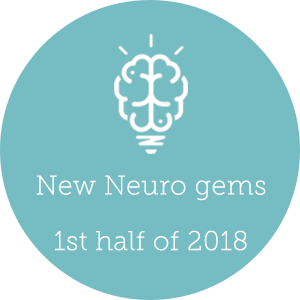‘Limited Edition’ or ‘Best Seller’? Avoid painful mistakes in persuasion attempts
Relevant topics Archive, Conversion
Both ‘Limited Edition’ and ‘Best Seller’ labels might persuade consumers to purchase your product. Would you be able to pick the most effective from either of these?
Many companies actively engage in persuasion these days, only just a few are confident about who they’re targeting with what cue. This article will help you differentiate between two customer segments, to target them with the most effective persuasion cues.
Scarcity and popularity
When promoting an article with ‘Limited Edition’-cues, you’re basically signaling scarcity. Previous research shows that those cues are closely associated with high levels of product uniqueness and product risk.
On the other hand, ‘Best Seller’-stickers signal popularity and indicate general social preference. Furthermore, those cues are linked to low levels of product exclusivity.
The phenomenon that scarcity is popular when one is shopping for themselves, is called the ‘scarcity for me’-effect. Wu & Lee (2016) propose that perceived product uniqueness can alter the perceived product value.
Next to that, they propose an altering effect of the ‘popularity for others’-effect, which is the phenomenon that popularity is an important consideration when shopping for others. Here they propose that perceived consumption risk mediates perceived product value.
Retail cues and their effectiveness
Both scarcity and popularity cues are abundant in retail environments. Scarcity might be signaled through focusing on limited time or limited quantity. Limited quantity is a form of scarcity on the demand-side, while limited supply or limited edition are considered as supply-side forms of scarcity. Research shows demand-side scarcity is more influential than scarcity on the supply-side.
Popularity cues signal general market preferences, which act as social norms to drive buying behavior. For example, claims like ‘Best Seller’-stickers or ’75% of consumers who viewed this product purchased it’ are seen as popularity cues. Furthermore, popularity cues signal social validation and lead to higher expectations of product quality.
Previous research has shown that popularity cues outperform scarcity cues for functional products, like household goods. On the other hand, the exclusivity elicited by scarcity cues seems the better choice for self-expressive products like clothing and more hedonistic purchases.
Underlying psychological drives
What psychological drives account for these differences in effectiveness?
Consumers have an implicit need for uniqueness. The acquisition, utilization, and disposition of consumer goods enable them to distinguish themselves from others. By those means, scarcity cues will lead to more favorable product attitudes and increased purchase intentions for self-purchases. This effect can be explained by the perceived product uniqueness, which is higher for scarce products.
On the other hand, purchases lead to a certain amount of consumer risk, in terms of product performance and negative anticipation of consumption consequences. Researchers Campbell and Goldstein illustrated this effect in their classical piece in 2001, stating that individuals who purchase wine might perceive it as highly risky if they don’t know what the wine tastes like and how dining guests will like it.
By those means, consumption risk is considered as an important factor in decision making for others, making the perceived consumption risk accountable for an effect on purchase intention. Popularity cues lead to more favorable product attitudes and increased purchase intentions when shopping for others.
Perfect persuasion: effective cues
Especially online, retailers should be able to alter their persuasion cues to the purchase intent of consumers. For example, consumers searching for products for others - which can be identified by their clicking on ‘gifts’ - will be more powerfully persuaded by ‘Best Seller’-cues. Next to that, especially during the holiday seasons, promotional campaigns containing popularity cues should be more effective.
On the other hand, persuasion cues on scarcity should be more effective for products that offer consumers a perceived high level of uniqueness. This would hold for exclusive clothing, unique holiday trips and home furniture of the classy type.
Further Reading
-
5 Best NeuroMarketing Insights You Might Have Missed - First Half Of 2018
Are you up to date?
Knowledge is expanding faster and faster nowadays, it’s said to double every 12 hours! This means that there’s a lot of neuromarketing facts including new tips and tricks you might have missed. The past half year, there have been articles on dominance, packaging, the prediction of Tinder dates, pricing green products, and sound/smell in stores and ads. We summarized the main findings below. Sit back in your beach chair and get ready for some new inspiration!


